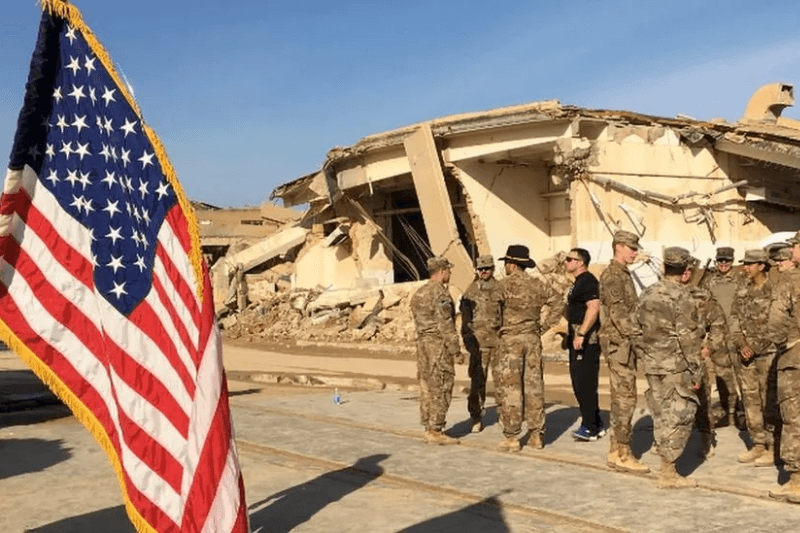
U.S. Retaliatory Strikes: The Drone Attack on Iraq Military Base
In a volatile escalation, a drone attack targeted the Erbil Air Base in northern Iraq, leaving three U.S. service members wounded. The Pentagon attributed the attack to Kataib Hezbollah militants, leading President Biden to order swift retaliatory strikes. Here’s a comprehensive overview of the incident and its repercussions.
The Drone Attack and Casualties
The assault, orchestrated by an Iran-affiliated terrorist group, unfolded on a Monday morning, resulting in three U.S. service members sustaining injuries. Defense Secretary Lloyd Austin revealed that one of the wounded is in critical condition, emphasizing the severity of the situation.
Presidential Response and Retaliatory Strikes
President Biden, briefed after the attack, took decisive action by ordering retaliatory strikes. The strikes targeted three locations used by Kataib Hezbollah and affiliated groups, specifically focusing on unmanned aerial drone activities. National Security Council spokesperson Adrienne Watson confirmed the president’s directive after consultations with Defense Secretary Austin and the national security team.
Keep Reading
CENTCOM’s Operation and Outcomes
The retaliatory strikes, executed by U.S. Central Command (CENTCOM), occurred at 8:45 p.m. Eastern Time on three sites within Iraq. CENTCOM reported that the strikes likely resulted in casualties among Kataib Hezbollah militants. Crucially, no civilians were believed to be harmed during the operation, reinforcing the precision and intent of the U.S. response.
Iraqi Perspectives and Condemnation
Iraqi Prime Minister Mohammed Shia al-Sudani condemned both the initial militia attack and the subsequent U.S. strikes. The prime minister characterized the U.S. response as a “hostile act” infringing on Iraqi sovereignty, introducing a diplomatic layer to the aftermath of the incident.
The recent attack adds to a series of incidents involving Iranian-backed militias targeting U.S. forces in the region. Since the October 7 terrorist assault on Israel by Hamas, a group allegedly supported by Iran, tensions have escalated. The U.S. has responded with targeted strikes on Iran-linked weapons facilities and fighters.
Broader Regional Dynamics
This event occurs amid increased Houthi rebel attacks in Yemen, with Iran alleged to be deeply involved. The U.S. has accused Iran of influencing Red Sea attacks, a claim Tehran denies. The intricate regional dynamics contribute to the complexity of geopolitical relationships and actions.
Previous Incidents and Global Ramifications
Recalling the November 20 missile attack on Al-Asad Airbase, where U.S. service members were injured, parallels can be drawn with the recent retaliatory strikes. The cyclical nature of these events underscores the persistent challenges in the region and the U.S. commitment to responding to threats.
Diplomatic Exchanges and Crisis Management
Iran, responding to allegations related to a drone fired from Yemen, denied responsibility, emphasizing regional complexities. Diplomatic tensions, exacerbated by U.S. support for Israel, contribute to the intricate web of crises. Managing these situations requires nuanced diplomatic strategies and international cooperation.
Economic Implications
The recent attacks in the Red Sea prompted energy giant BP to temporarily suspend gas and oil shipments. Economic considerations, intertwined with geopolitical events, showcase the far-reaching consequences of regional conflicts.
The drone attack on the Iraq military base and subsequent retaliatory strikes highlight the delicate balance of power and diplomacy in the region. As tensions persist, navigating the complex landscape requires a comprehensive understanding of historical contexts, regional dynamics, and the intricacies of crisis management.




